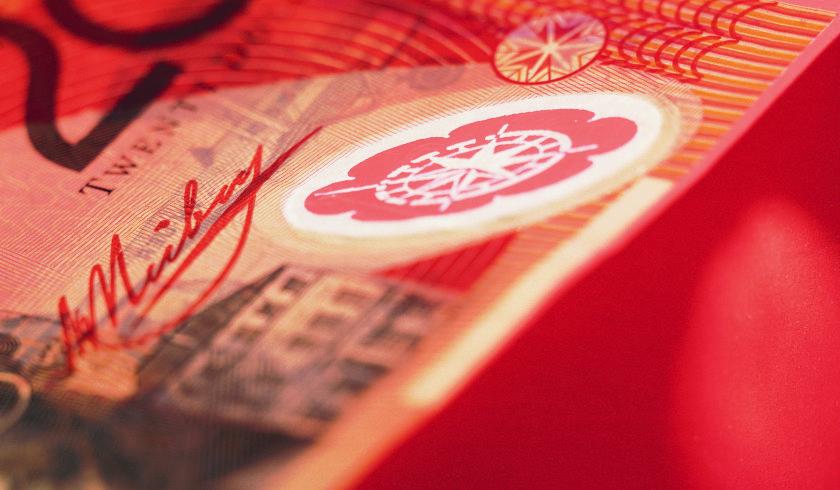Why investors should aim for ‘controllable cash flow’
Property investment could be described simply as purchasing properties “that are going to go up in value as much as possible while only costing as little as possible to hold,” and for most investors, success is dependent on a single benchmark—yield.

As an avid investor, Smart Property Investment’s Phil Tarrant always makes sure that his assets are generating income through rent so he can continue to hold the properties without much pressure to shell out money from his own pocket.
To continue reading the rest of this article, please log in.
Create free account to get unlimited news articles and more!
“[Looking] at our portfolio in terms of how much income it generates, at the moment, it's about just over $20,000 a month—that's $240,000 a year. That's money coming into our bank account,” he explained. “How much is going out as part of that? Now I'll look at our total repayment amount every single month, [and it] is about $14,000 or $178,000 a year. When you look at how much money is coming in versus how much money there needs to go out, we're left with about 27 per cent of everything that we earn... which we've got to use to pay for other stuff [like]... rates, insurance, repairs, and maintenance.”
The expenses will eventually add up, which will then lead to the categorization of one’s property portfolio as being positively geared or negatively geared.
However, buyer’s agent Steve Waters believe that more than desiring a positive cash flow, property investors must be careful not to sacrifice growth and, instead, work to attain “controllable cash flow.”
“My fear for a lot of people is that, perhaps, they've got used to very cheap money… As rates get up to their five and a half somewhere in the future, are they still going to be in a position to control their asset?” He added, “if you go back to the [Global Financial Crisis]... not many people lost their portfolios or their assets for lack of equity—it was from a lack of cash flow… and we don't particularly mean… positive cash flow… In this scenario, the barometer or the benchmark that property investors talk about is yield.”
Phil and his team use four different yields to determine the status of his property portfolio, rate its performance, and gauge its progress:
1. Book rental yield
The property investor defines this as the yield against the purchase price.
He explained: “[This] is the standard way to look at it—you work out what your rent is, you [multiply] it by 52, then you divide it by how much did you buy your property for or your portfolio for… Our number is 7.3 per cent [which is] pretty good.”
However, this computation does not account for many other factors that affect his assets, including buyer's agency fees, stamp duty, conveyancing costs, and other ongoing costs.
2. Net rental yield
Another measurement that Phil uses to paint a picture of his portfolio’s performance is the Net Rental Yield.
“Your rent times 52, but divided by the [purchase price plus] the total establishment costs for these [other] things [or costs],” he said. “Our number there is 6.6 per cent, [which is] more of a realistic take on where our portfolio is.”
Steve added: “I think it's important that you do do that… Most people don't know what their true position is unless you throw everything into the pot.”
3. Market yield
Phil defines this measurement as “our total rent over our current valuation—that's on the basis of what are these properties worth today.”
4. Debt yield
The debt yield is perhaps the most important measurement for Phil and his team.
“[This] is against the size of the mortgage,” Phil said.
“My debt's my biggest expense, and if it's costing me 5 per cent but my gross yield is 7… that's not a bad spread to take care of everything else. I know [many people] would be on going, ‘That's not the way to look at it,’ but for me, it is, because I might have controlled the property for years and the debt's stayed the same,” said Steve.
“If I've had a property for 20 years that I bought for $100,000, it's now worth half a million and the rent's $350 a week, my value to income percentage isn't going to be that attractive.”
At the end of the day, property investors will do good to track the relevant numbers that affect their portfolio to be able to park buffers aside and ultimately establish a good risk management system.
“[It goes back to] what's in my pocket? Is it hurting and am I worried about it? Am I sleeping well at night and I'm not too concerned at the moment even though we're in an environment where things are changing quite quickly?” Phil said.
Steve concluded: “It's really [all about] what the debt's costing me, which is my biggest expense, versus the current income for the property. Once again, we're creating these different metrics, and that's only because we like to do so, but there are a lot of people out there that are just doing it on the standard purchase price, and I think that's… cheating themselves.”
Tune in to Phil Tarrant’s portfolio update on The Smart Property Investment Show to know more about his acquisition costs, “boring” assets, risk mitigation, cash flow management and yearly income, as well as the inside scoop on a new property that could take the team’s investment strategy to the next level.

